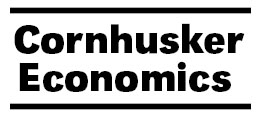Agricultural Economics, Department of

Cornhusker Economics
Date of this Version
5-30-2018
Document Type
Newsletter Issue
Citation
Cornhusker Economics, May 30, 2018, agecon.unl.edu/cornhuskereconomics
Abstract
Over the last decade, food fraud scandals, such as the adulteration of Chinese milk with melamine, the discovery of horse-meat in many European meat products, and the mislabeling of Italian olive oils, have increased the attention of the media, consumers, and governments about the vulnerability of the food system to intentional adulteration or misrepresentation of product ingredients or products themselves based on economic motives (Lotta and Bogue 2015). Food fraud is defined as the intentional substitution, addition, tampering, or misrepresentation of food products for economic gains (Spink and Moyer 2011). Food fraud is motivated by economic gain and is enabled by two important features. First, consumers cannot verify the presence of economically important attributes, such as whether a product is “organic,” even after having consumed the good, for many of the products affected by food fraud. These types of goods are called credence goods. Second, the monitoring of labeling or certification requirements is costly,

Comments
Copyright 2018 University of Nebraska